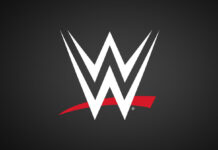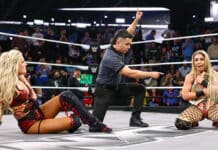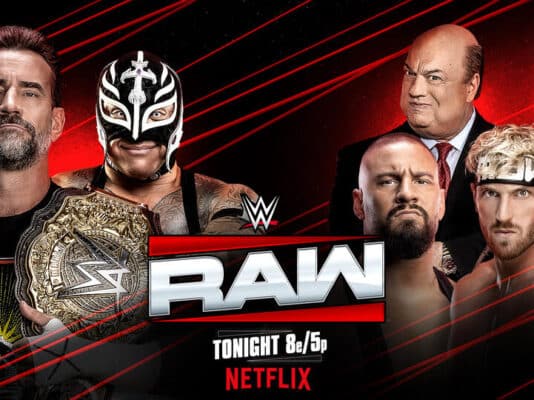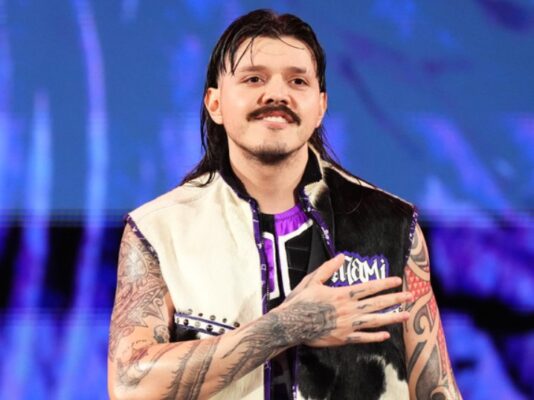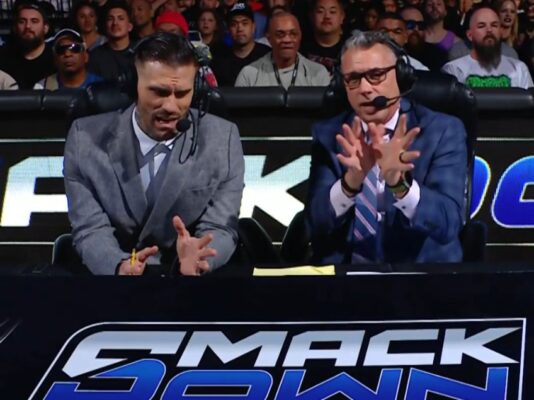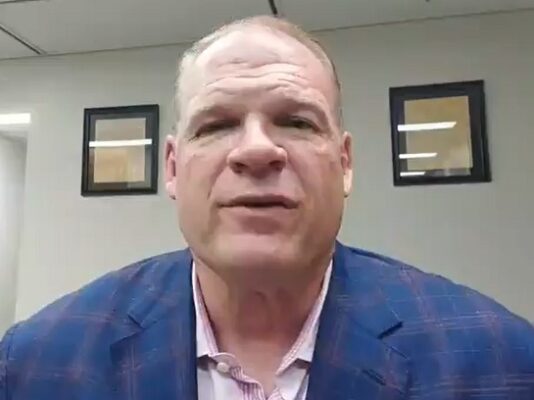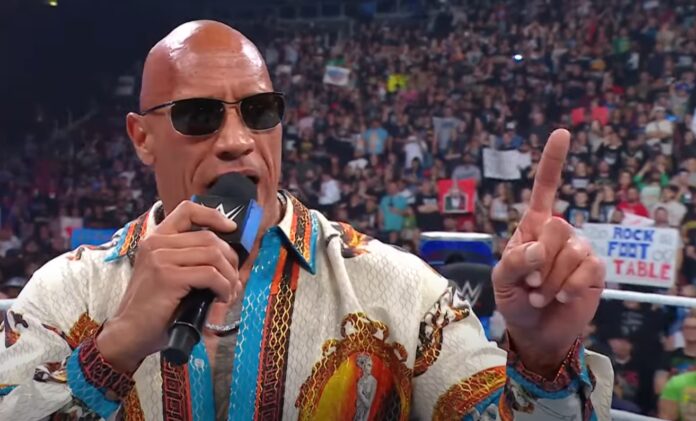
The Rock effect is in full swing in the WWE.
More than two decades ago, Dwayne Johnson took the stardom that he garnered from working a relatively short pro wrestling career during the hottest period in the business in the late-90s and transitioned that to become one of the biggest stars in Hollywood. The Rock worked almost continuously on one film or another for the past several years, occasionally making a comeback to the ring, most notably for a pair of highly-profitable bouts against John Cena in 2012 and 2013, a time period before a streaming platform offered pay-per-views at a fraction of the traditional price.
One of the criticisms of The Rock’s cameo appearances over the years was that his promos usually leaned on cliches and tired catch phrases, and there was validity to that, but at the same time, the general public wanted The Rock to play the greatest hits on the rare occasion that he was back on WWE television.
It’s a unique time frame for the WWE and for The Rock himself. Despite the XFL flopping twice, for whatever reason, Dwayne Johnson thought that he could get the league off the ground when he bought it for $15 million a few years ago. Similar to the original league, the new edition of the XFL lasted one season after it launched last year, but intends to continue this season after it merged with the USFL to form the UFL as a spring league. As I’ve said anytime I’ve discussed the prospect of the XFL or any other spinoff league, the NFL dominates the sports landscape in America because of the brand recognition, history, and level of play of the league, not just the concept of football. It’s very doubtful that any type of spring league, regardless of who is the figurehead behind it, will truly make a dent among the general public. At the same time, Johnson’s past few films haven’t exactly received rave reviews, despite the fact that they did well at the box office.
It’s basically a win-win for everyone involved, as the WWE needed some type of positive PR after Vince McMahon resigned in disgrace after some horrendous allegations in the lawsuit, and Dwayne Johnson can reinforce the association of his brand with success as he makes a major impact with his return to pro wrestling. The Rock being named to the TKO board gives the corporation much better optics, as Dwayne Johnson is known as a legitimately nice guy for the stuff he does on social media through different charitable efforts, and it allows the conglomerate to continue to distance itself from Vince McMahon, who has a reputation as a sleazy executive that was accused of misconduct.
The promo with The Rock and The Bloodline made it clear that Dwayne Johnson was there to do business, not lean on old catch phrases.
While some might describe WWE as being in a hot period right now, as I’ve said before, I think that notion is misguided. The WWE is definitely better serving its audience and thus those fans are willing to spend more money on the product with ticket sales and merchandise, which is undoubtedly a success for the company. However, I don’t think that means that the company is somehow a part of the pop culture conversation or anywhere close to a boom period for the industry.
That’s not to discard the success, but as a comparison, this past Monday, Raw garnered a rating of 1.74 million viewers. When the business was a part of pop culture in the late-90s, it wasn’t uncommon for Raw to land 4-5 million viewers, with another 3-4 million watching pro wrestling on another channel. Granted, the entertainment landscape has completely changed because of the amount of options that compete for viewers, but the point being, at least right now, WWE is generating record-setting profits because of the climate of the television and media industry, not because there’s another boom period.
Truth be told, I’m not sure if the structure of the modern WWE, with seven hours of weekly TV and extended pay-per-views is something that the general public would follow enough to make it a part of pop culture again. Keep in mind, there are more media options now than any other time in history, Every podcast, streaming platform, and TV network is competing for viewers. Plus, a lot of the current generation are considered the “TikTok generation” with short video clips. Can the WWE truly get more fans to watch a three-hour episode of Raw or more specifically get new fans to watch the Monday night show after its put behind a paywall for Netflix next year?
That being said, The Rock’s promo segment on Smackdown proved that not only can he still be a very important part of the WWE machine, but the extra spotlight that he brings to the table could be very useful for the rest of the roster.
Smackdown is a two-hour show, and if you subtract the commercial time, there are roughly 82 minutes of runtime for the broadcast. The Bloodline and The Rock had a segment on Smackdown that went just over thirty minutes from the entrances until the show went off the air. The Rock and The Bloodline had a promo segment that was technically more than a third of the actual broadcast, and they kept it compelling television. The Rock had a purpose and the promo had an impact on the set up for Wrestlemania, particularly with the tag match the first night and then the title match on the second night of the event. Not only did the promo have a meaningful direction, but the stipulation allows for the first night of Wrestlemania to build to the second night of the show.
One of the perks of getting The Rock back on a semi-regular basis is that his involvement can get some of the causal fans to take notice of some of the full-time performers. During the promo on Smackdown, The Rock yielded to Roman Reigns as the tribal chief of The Bloodline. Obviously, Dwayne Johnson is a bigger star than Roman, but within the context of the storyline, The Rock made Reigns the leader of the faction. That’s important because the bigger of a star the heel is, the bigger the win for the baby face at the conclusion of the angle. If Roman is overshadowed by The Rock then Cody’s eventually victory doesn’t establish him as the top guy near as much as it would’ve otherwise.
The Rock adds a level of sizzle to the program, and with his involvement on the TKO board, that opens the door for him to be used more often, even if its eventually in a non-wrestling role. It was interesting to note that he used the term “wrestling,” something that Vince McMahon considered a dirty word, a few different times in the promo. While sports entertainment is a great marketing strategy, the fans don’t say they are “watching sports entertainment” or “going to the sports entertainment matches” so the segment was more authentic than some of the other angles from years prior to this. Furthermore, with Triple H as the head of creative, the biggest difference that you can see throughout the product is that there isn’t 50/50 booking to hinder the progress of the product. The argument could be made that the 50/50 booking of the latter Vince McMahon era neutralized the effectiveness of many angles. That’s why throughout much of the programming from 2016-2021 you could often skip a month of the show and not miss any key portions of the angle.
The point being the current product seems to have a firm direction and thus there’s a level of importance to the storylines. More specifically, The Rock emphasized the importance of the main event angle of Wrestlemania and that’s how you draw money. Some fans might criticize a part-timer returning to take a main event spot at WM, but there are very few in the business that could be involved in a thirty-minute promo segment and keep it as compelling as The Bloodline did on Smackdown.
What do you think? Share your thoughts, opinions, feedback, and anything else that was raised on Twitter @PWMania and Facebook.com/PWMania.
Until next week
-Jim LaMotta
E mail [email protected] | You can follow me on Instagram, Facebook, & Threads @jimlamotta89



